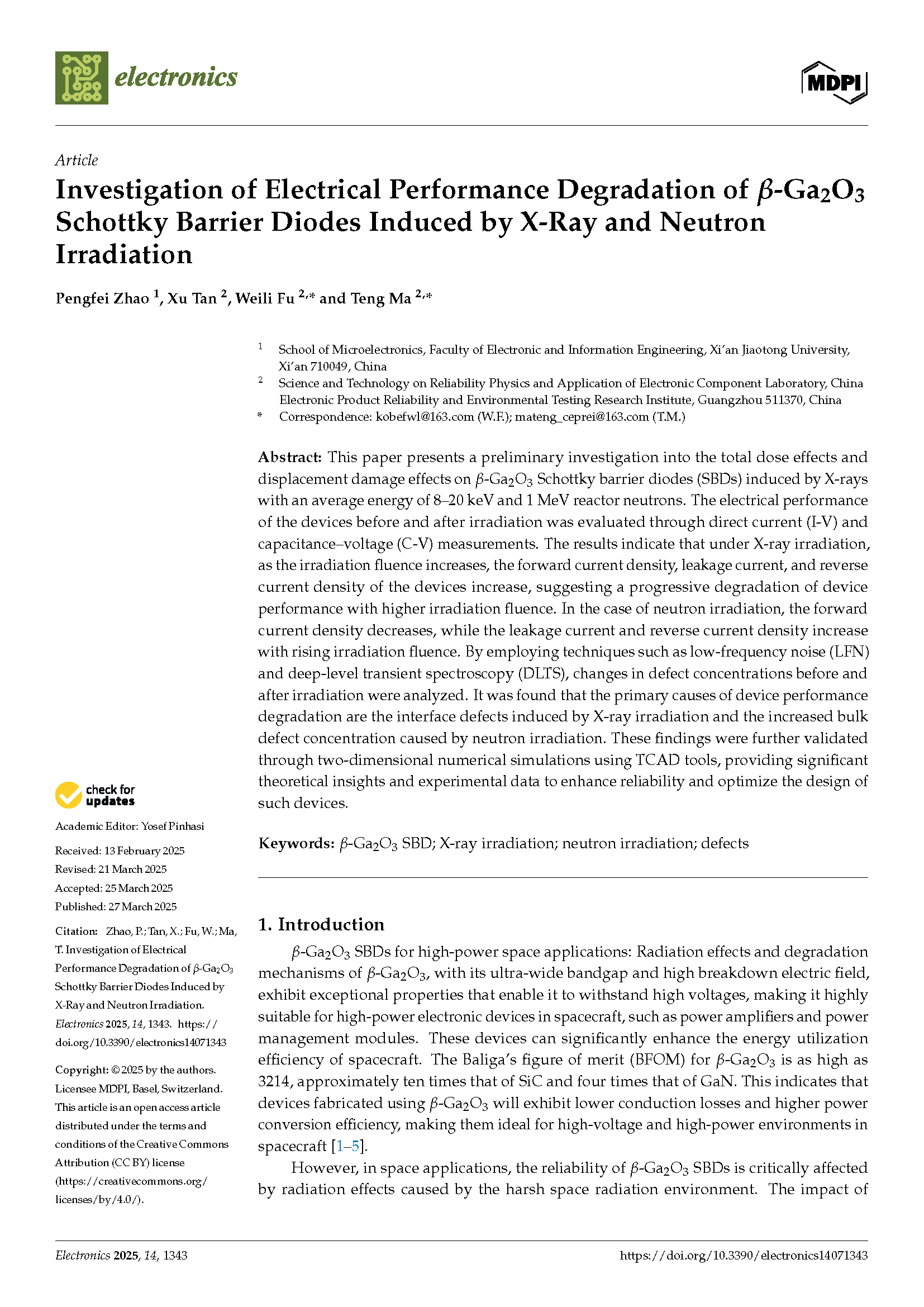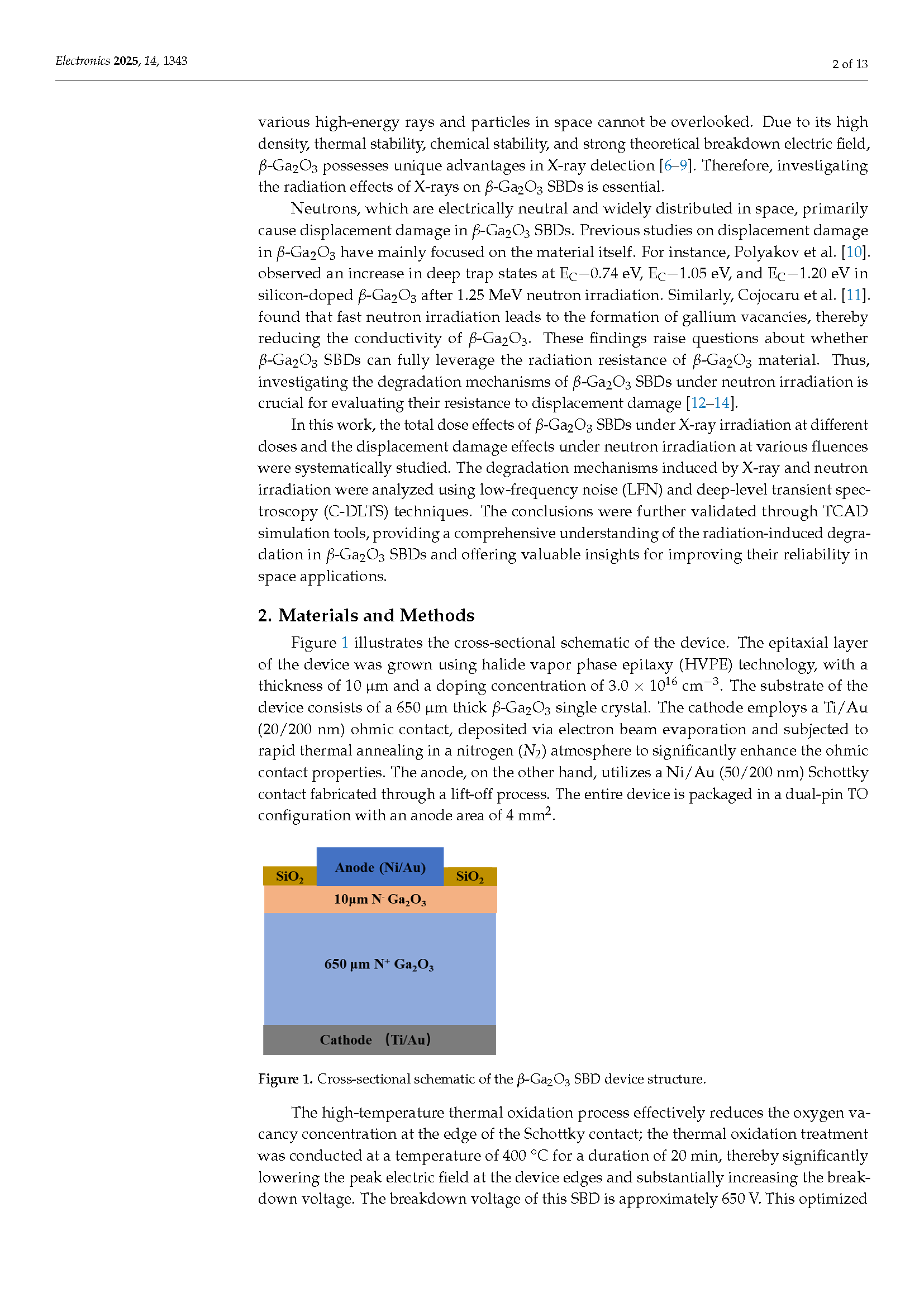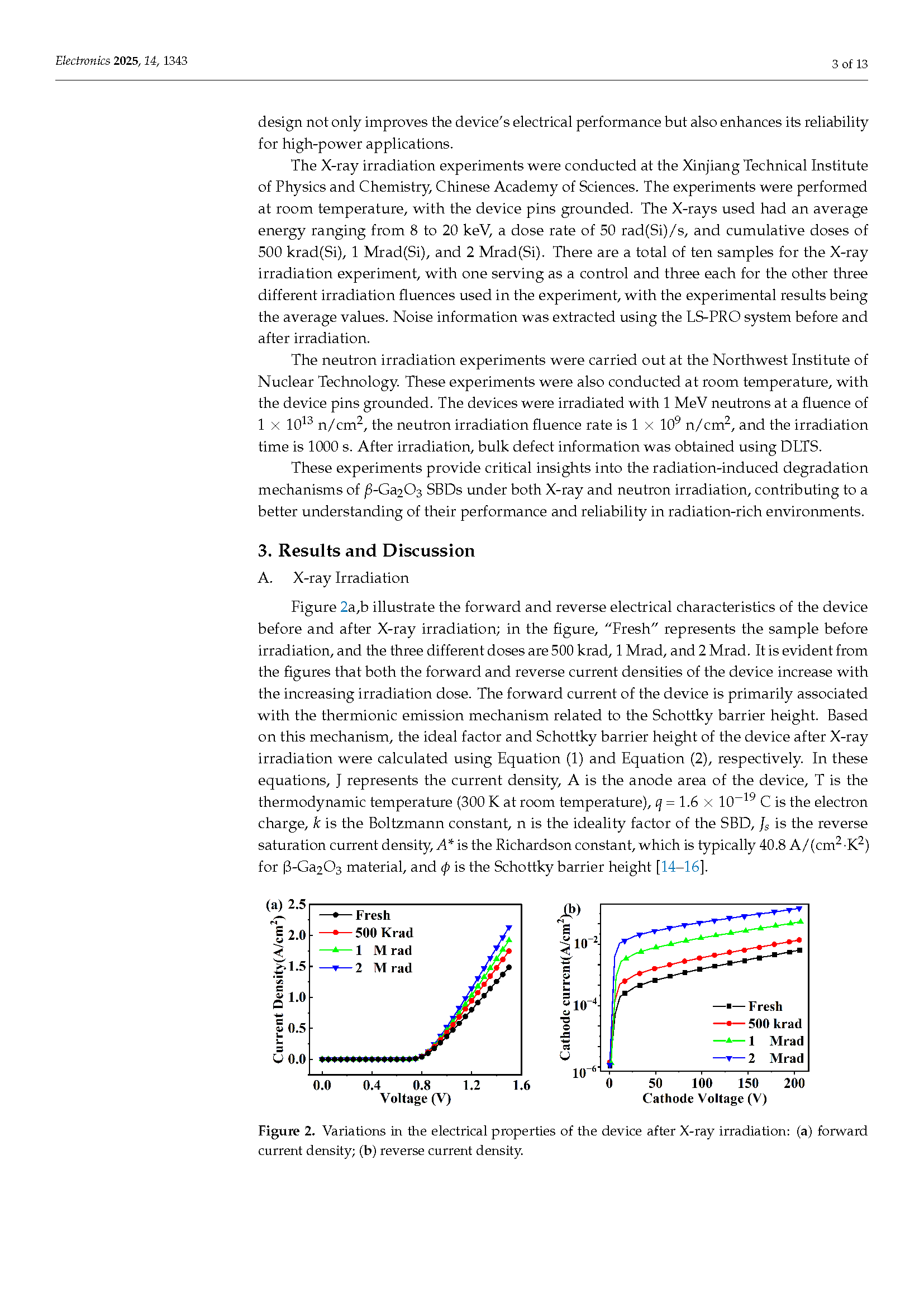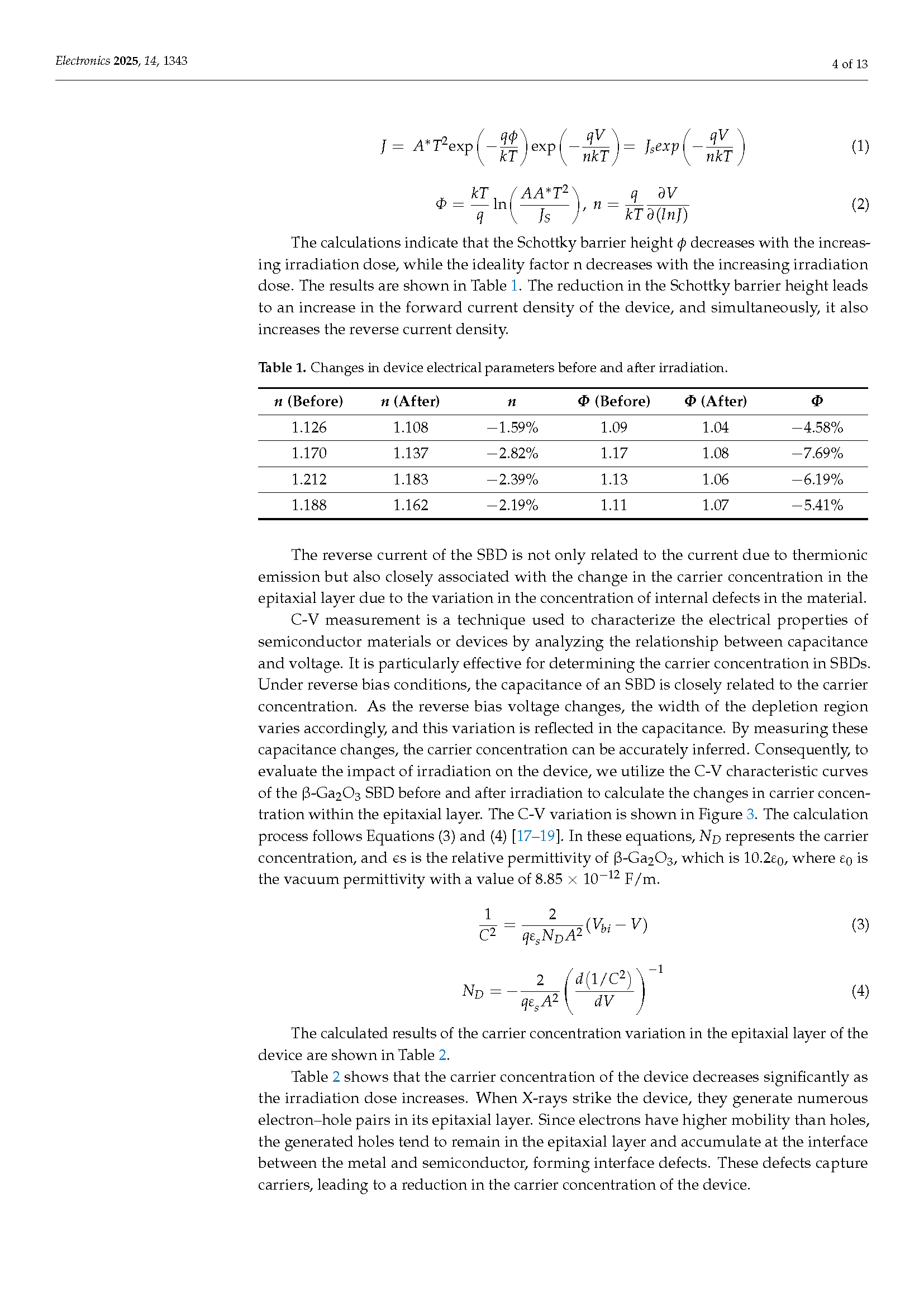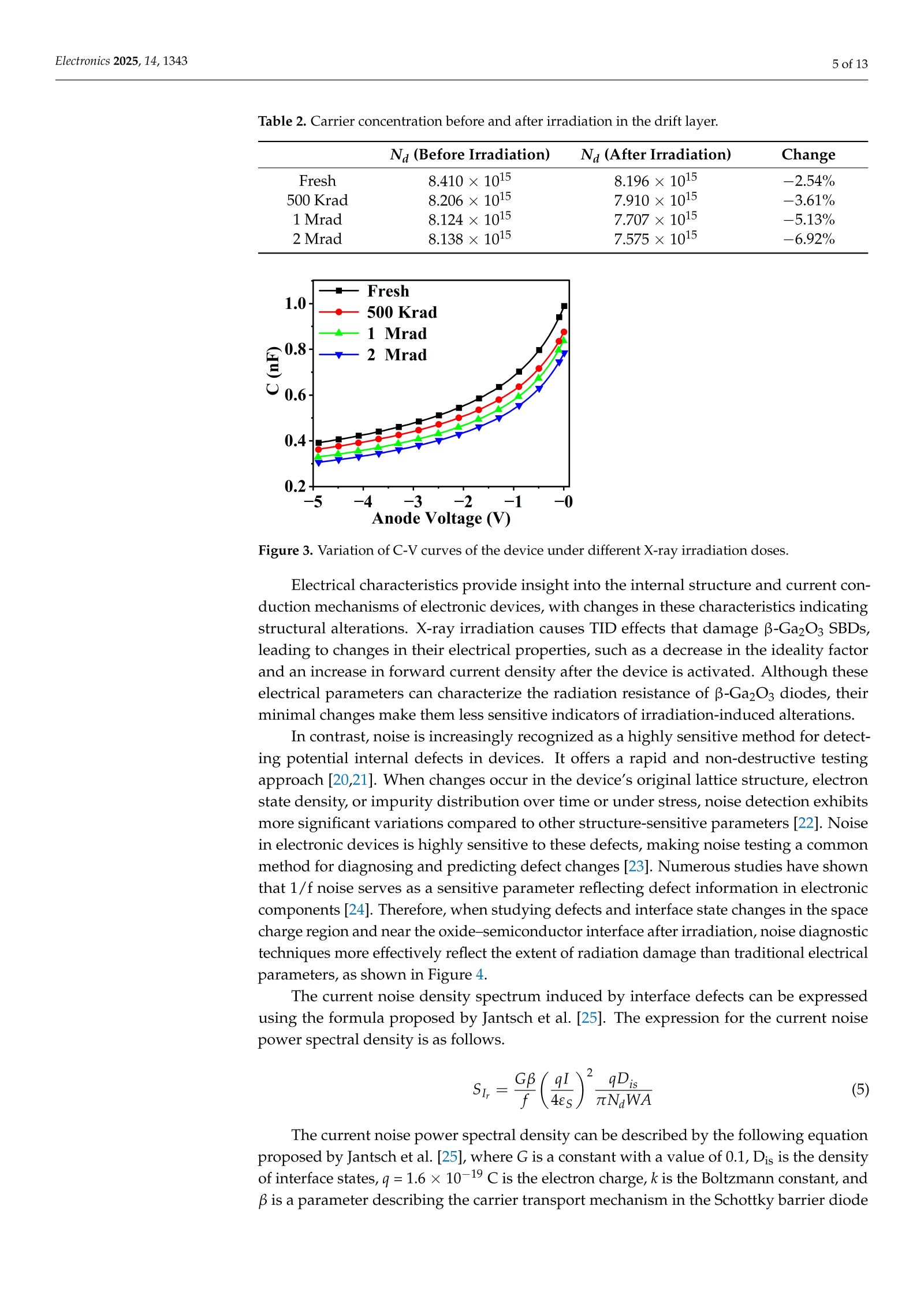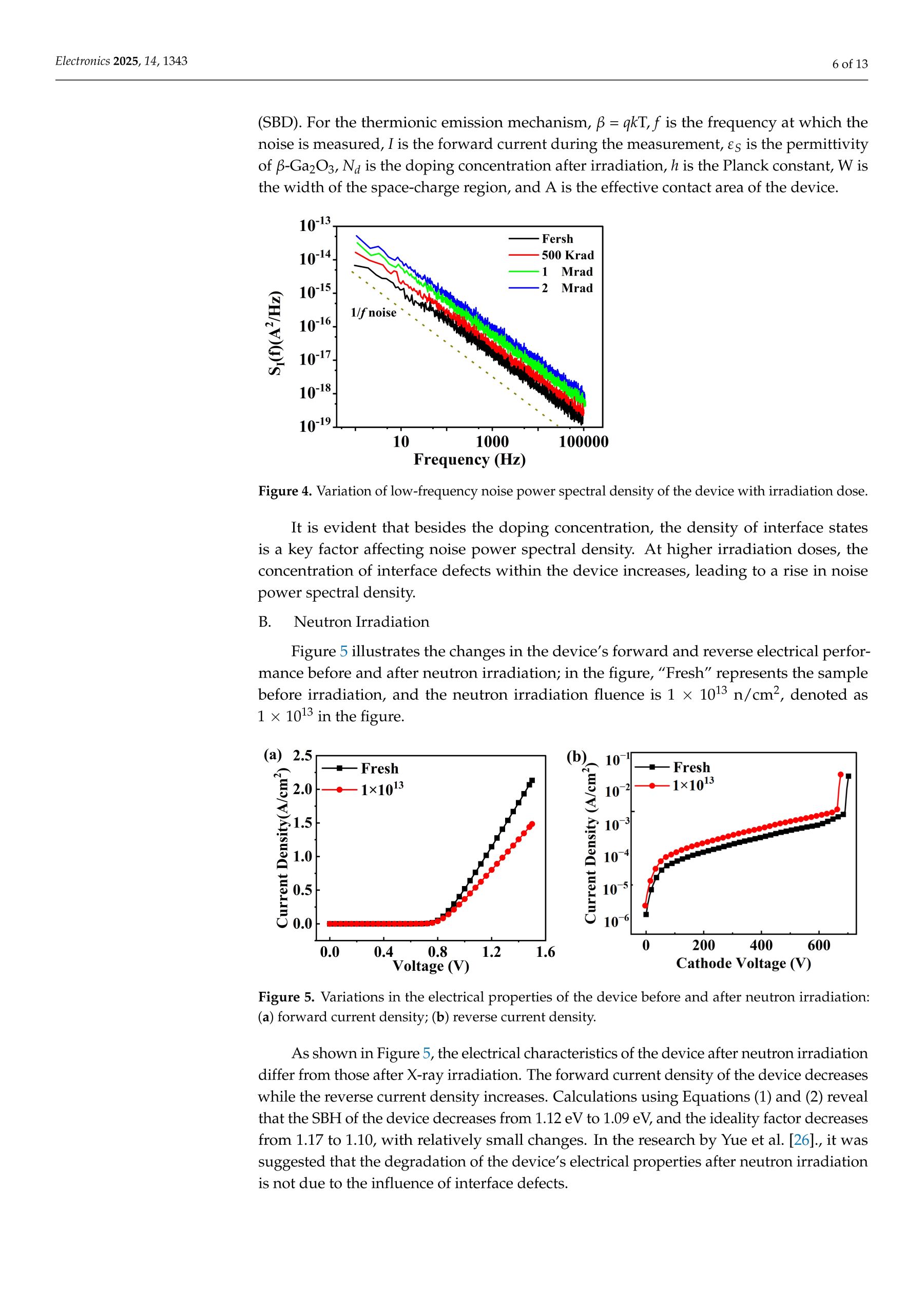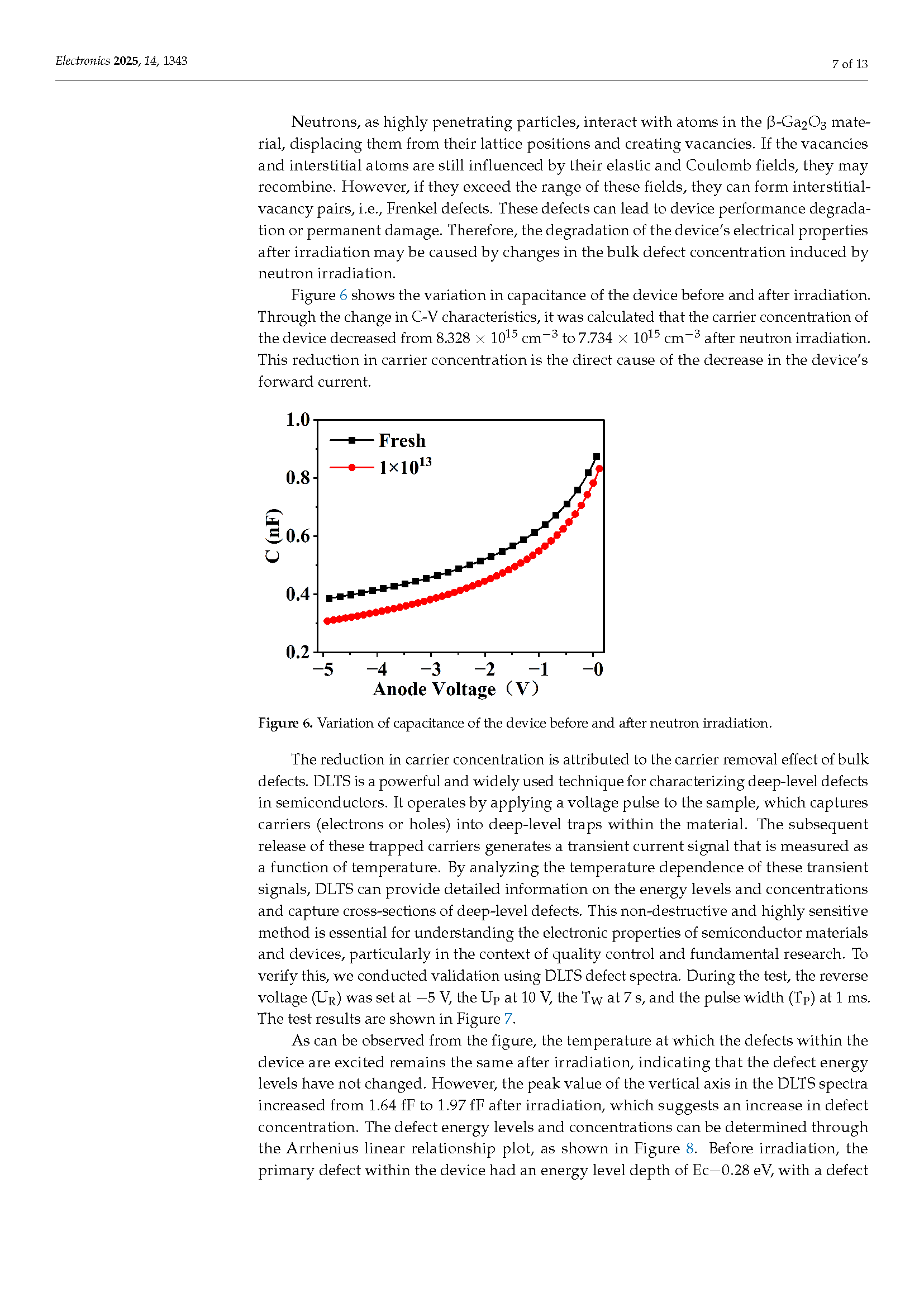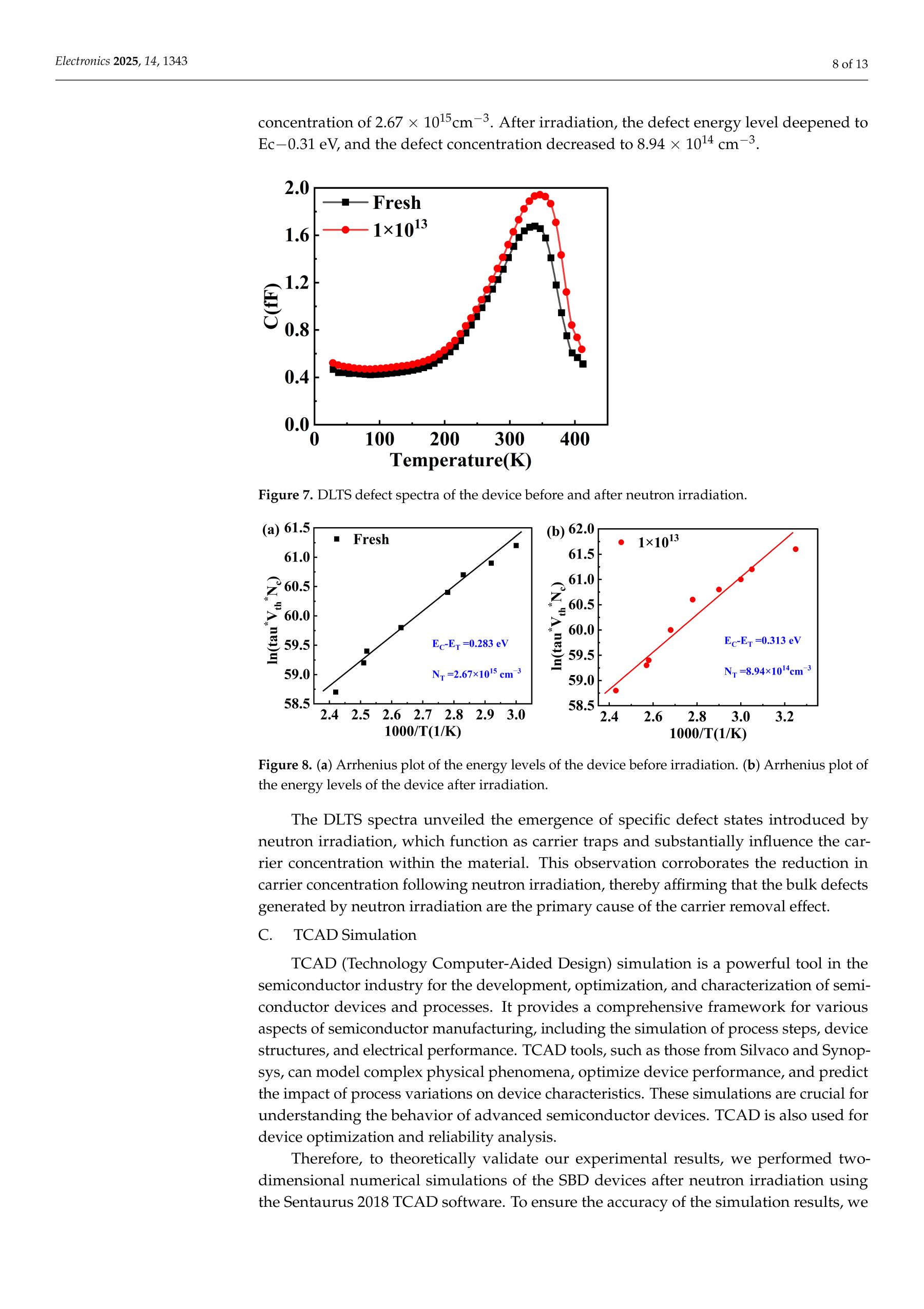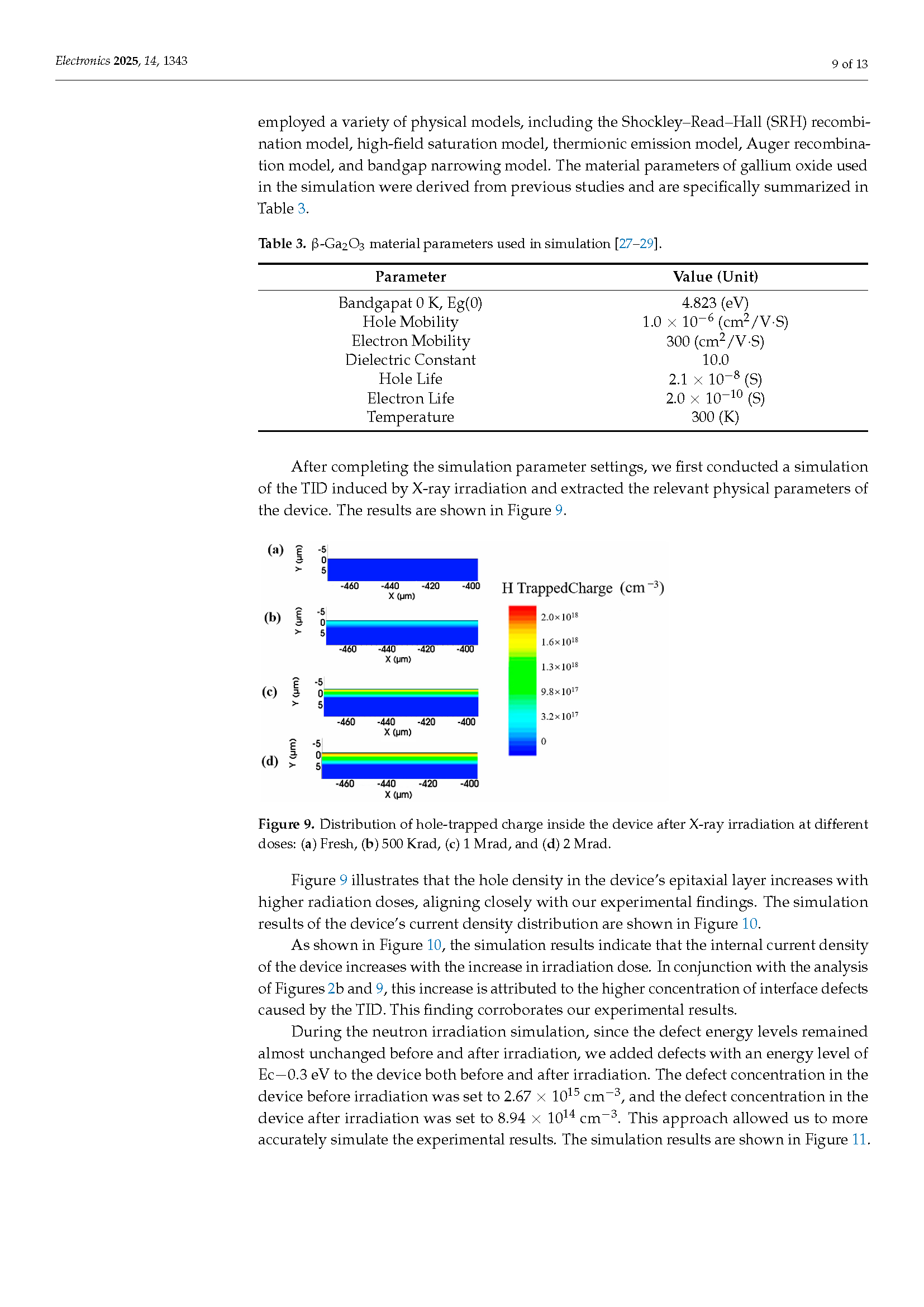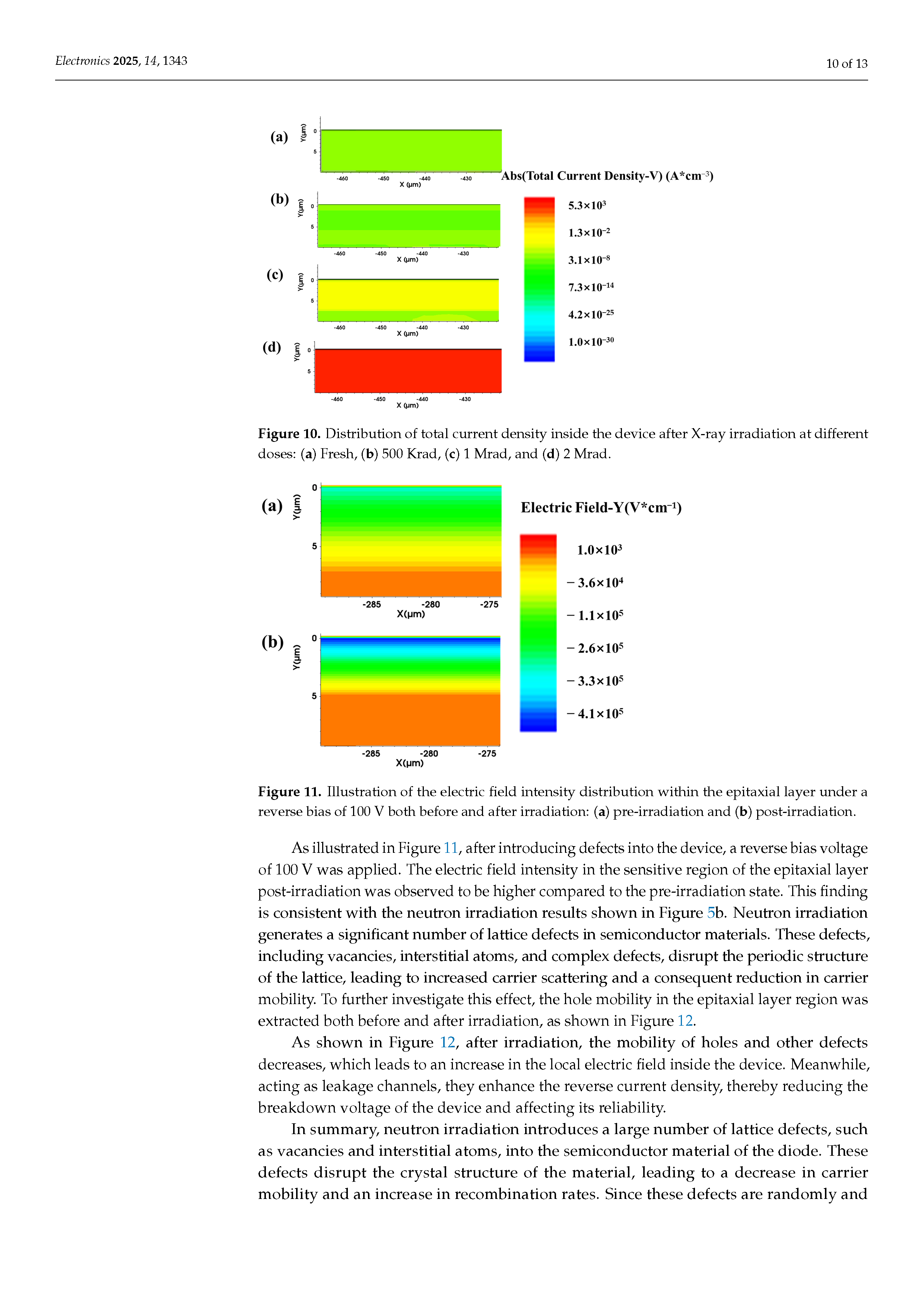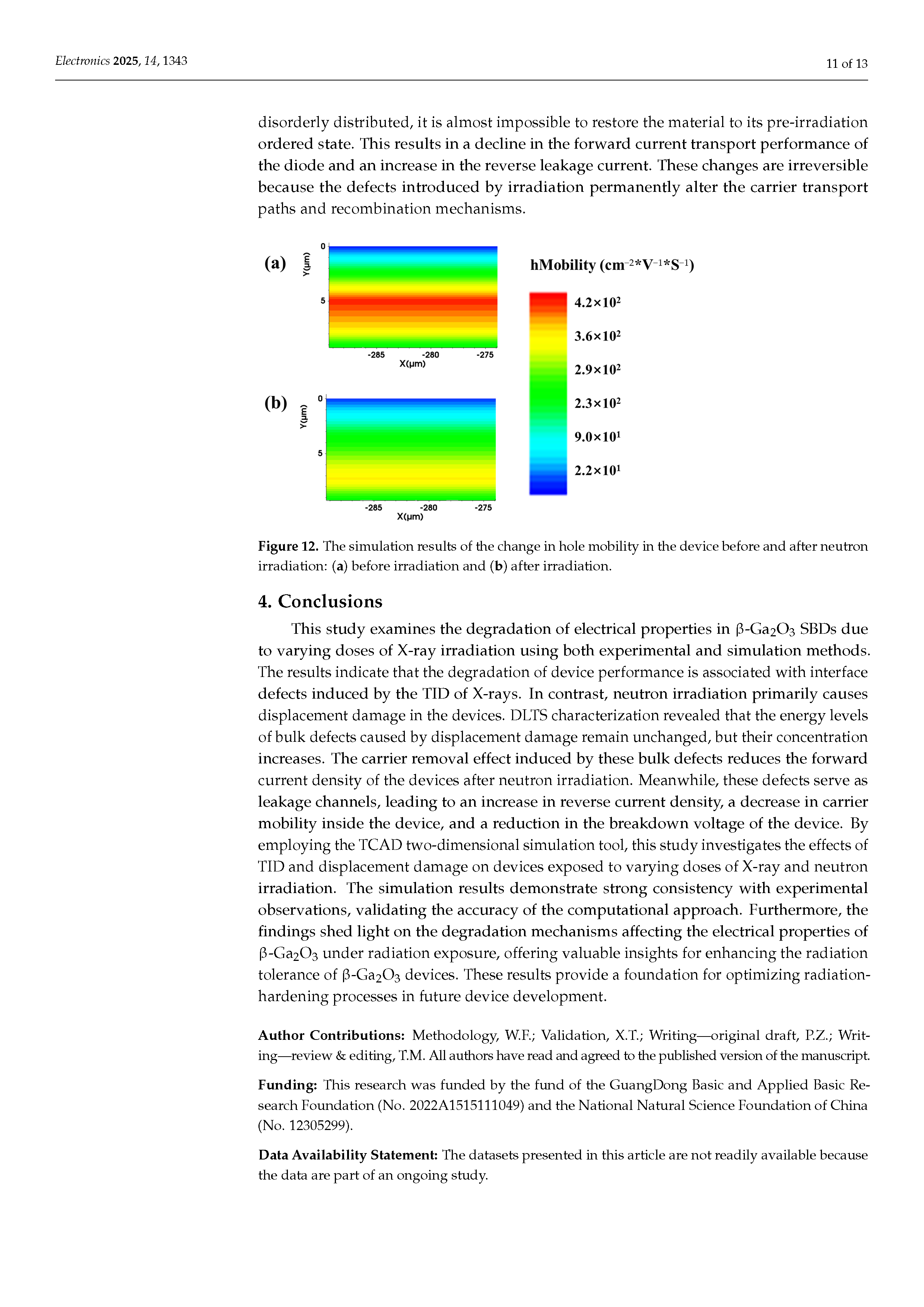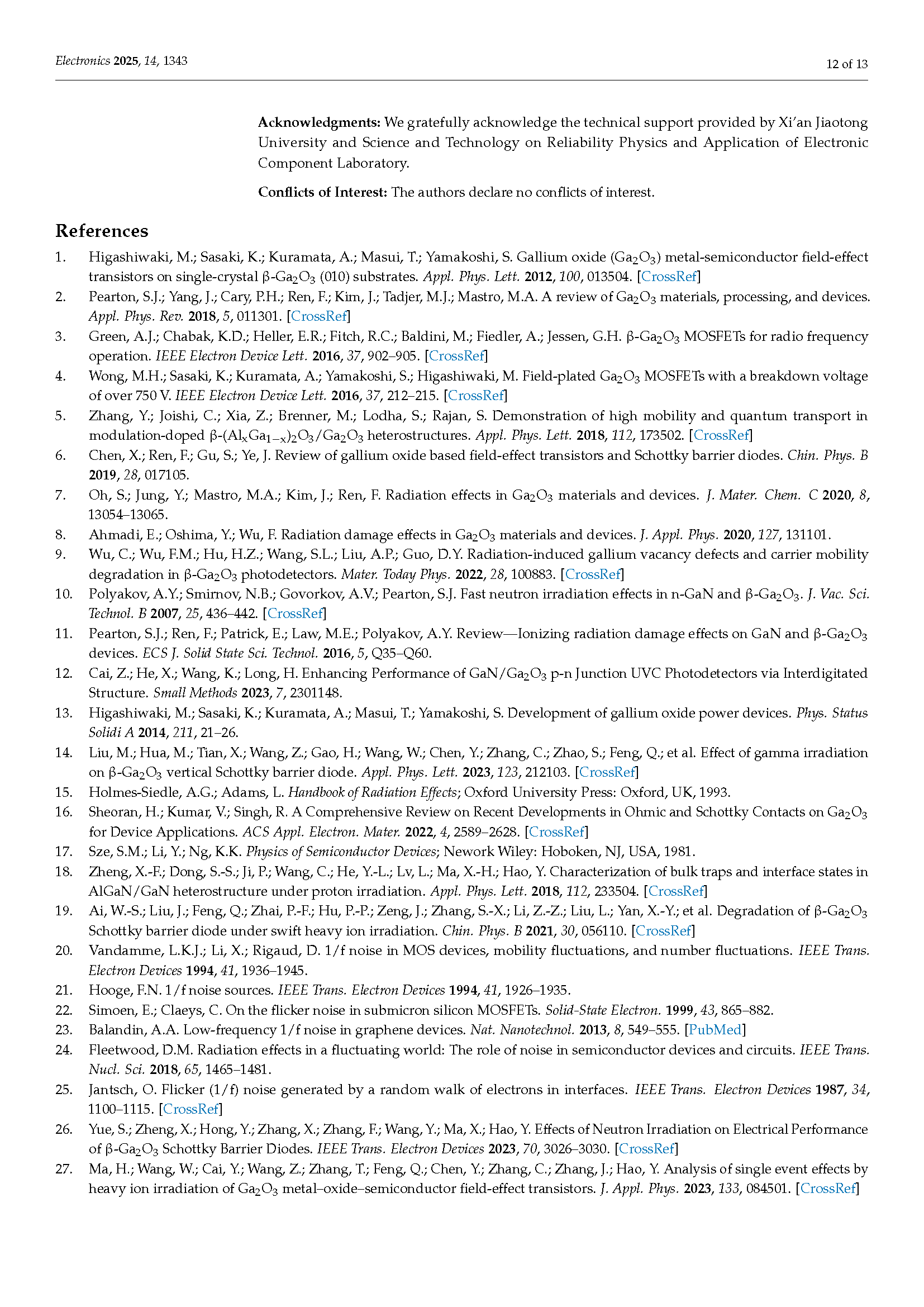
【Member Papers】Xi’an Jiaotong University---Investigation of Electrical Performance Degradation of β-Ga₂O₃ Schottky Barrier Diodes Induced by X-Ray and Neutron Irradiation
日期:2025-04-27阅读:415
Researchers from the Xi’an Jiaotong University have published a dissertation titled "Investigation of Electrical Performance Degradation of β-Ga2O3 Schottky Barrier Diodes Induced by X-Ray and Neutron Irradiation" in Electronics.
Project Support
This research was funded by the fund of the GuangDong Basic and Applied Basic Research Foundation (No. 2022A1515111049) and the National Natural Science Foundation of China (No. 12305299).
Abstract
This paper presents a preliminary investigation into the total dose effects and displacement damage effects on β-Ga2O3 Schottky barrier diodes (SBDs) induced by X-rays with an average energy of 8–20 keV and 1 MeV reactor neutrons. The electrical performance of the devices before and after irradiation was evaluated through direct current (I-V) and capacitance–voltage (C-V) measurements. The results indicate that under X-ray irradiation, as the irradiation fluence increases, the forward current density, leakage current, and reverse current density of the devices increase, suggesting a progressive degradation of device performance with higher irradiation fluence. In the case of neutron irradiation, the forward current density decreases, while the leakage current and reverse current density increase with rising irradiation fluence. By employing techniques such as low-frequency noise (LFN) and deep-level transient spectroscopy (DLTS), changes in defect concentrations before and after irradiation were analyzed. It was found that the primary causes of device performance degradation are the interface defects induced by X-ray irradiation and the increased bulk defect concentration caused by neutron irradiation. These findings were further validated through two-dimensional numerical simulations using TCAD tools, providing significant theoretical insights and experimental data to enhance reliability and optimize the design of such devices.
Conclusions
This study examines the degradation of electrical properties in β-Ga2O3 SBDs due to varying doses of X-ray irradiation using both experimental and simulation methods. The results indicate that the degradation of device performance is associated with interface defects induced by the TID of X-rays. In contrast, neutron irradiation primarily causes displacement damage in the devices. DLTS characterization revealed that the energy levels of bulk defects caused by displacement damage remain unchanged, but their concentration increases. The carrier removal effect induced by these bulk defects reduces the forward current density of the devices after neutron irradiation. Meanwhile, these defects serve as leakage channels, leading to an increase in reverse current density, a decrease in carrier mobility inside the device, and a reduction in the breakdown voltage of the device. By employing the TCAD two-dimensional simulation tool, this study investigates the effects of TID and displacement damage on devices exposed to varying doses of X-ray and neutron irradiation. The simulation results demonstrate strong consistency with experimental observations, validating the accuracy of the computational approach. Furthermore, the findings shed light on the degradation mechanisms affecting the electrical properties of β-Ga2O3 under radiation exposure, offering valuable insights for enhancing the radiation tolerance of β-Ga2O3 devices. These results provide a foundation for optimizing radiation-hardening processes in future device development.
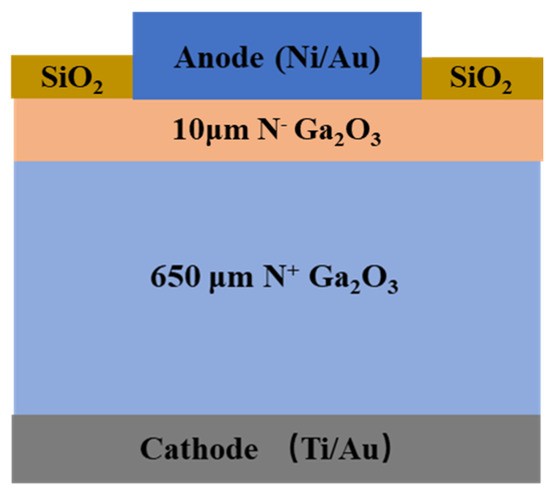
Figure 1. Cross-sectional schematic of the β-Ga2O3 SBD device structure.
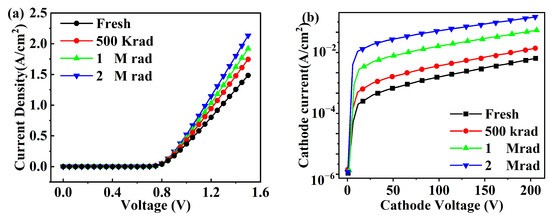
Figure 2. Variations in the electrical properties of the device after X-ray irradiation: (a) forward current density; (b) reverse current density.
DOI:
doi.org/10.3390/electronics14071343
